Menu
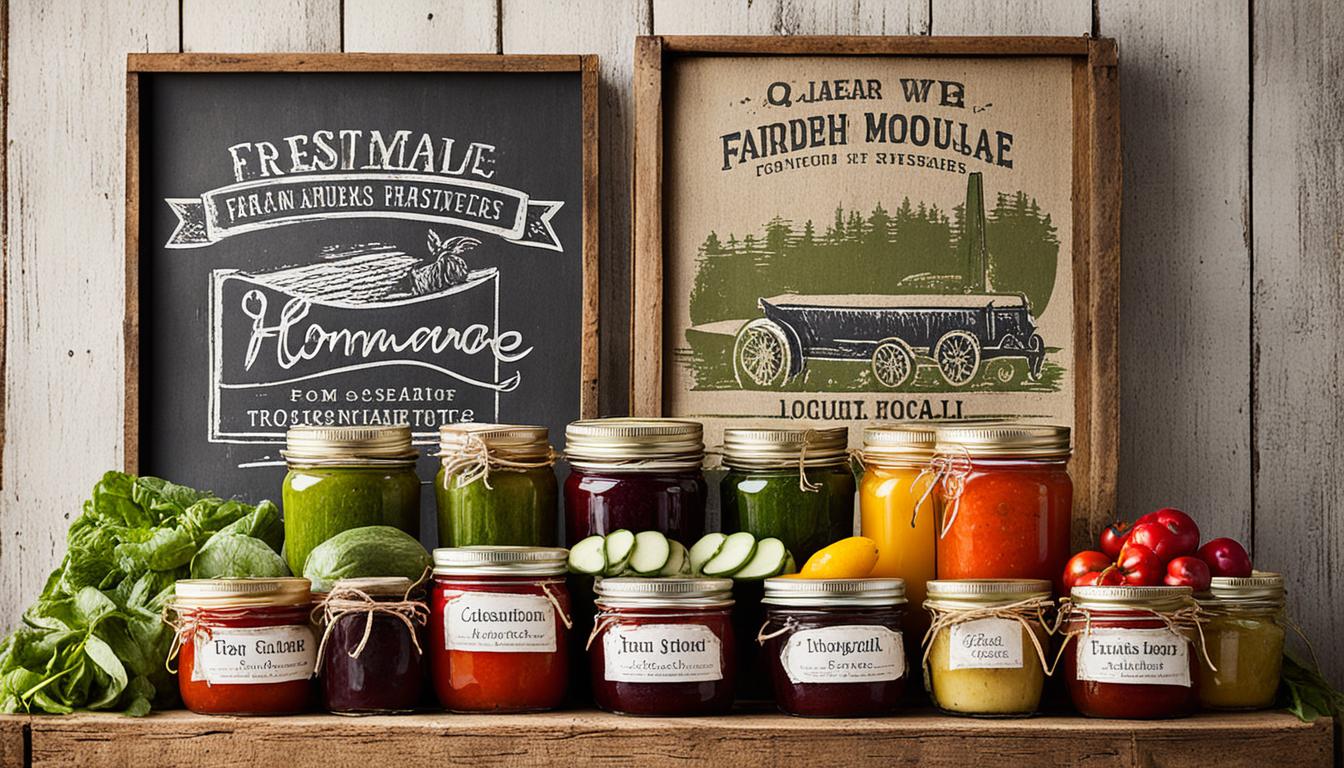
Chefs often buy produce directly from farmers. They pay about 75 percent of the retail price. This shows why it’s critical to have a strong presence when you sell farm goods. Selling directly involves a unique strategy that combines digital and physical efforts. You want to make sure customers always know what you offer.
Having your own website is key for showcasing your farm products. But, it’s not enough. You also need to share accurate, up-to-date info on Google Business Listings, social media, and in newsletters. This helps attract more customers and boost sales online.
To make a real connection with your shoppers, your buying process must be clear and safe. You need to keep them updated on product availability. A friendly, safe environment makes a big difference too. By combining these, you can keep customers coming back. This helps you sell more online, increasing your success.
In today’s world, knowing your audience well is key. This helps make product listings that really grab attention. When you do your homework and learn about the people who might buy, your products are more likely to be seen. They also meet their specific needs better.
Getting to know what people like in your area is super important. Use tools like those from Iowa State University and the Western Extension Marketing Committee. They can give you info on what people are looking for and what your competition offers. With this knowledge, you can make your products and strategies stand out. Doing good local market research lets you find what makes your farm’s products special.
It’s crucial to understand your potential customers in detail. This includes their age, how much they earn, and the cultural and food things they love. Knowing this helps you tailor your listings better. For example, young people might like products that are kind to the environment. Families, on the other hand, could be looking for good deals on buying a lot at once. Understanding these differences means you can write your ads in a way that really speaks to them. This way, you build a stronger bond with them, which can mean more sales.
| Market Research Attribute | Impact on Product Listings |
|---|---|
| Cultural Diversity | Customise product offerings to respect local dietary preferences. |
| Food Trends | Stay updated with popular health and wellness trends to stay relevant. |
| Income Levels | Offer products at varying price points to cater to different economic segments. |
Putting together what you learn about your local area and your potential customer’s specifics makes your listings really work. They become more engaging and relevant. As a result, your farm’s products are seen more and you can boost your sales.
Creating compelling product descriptions is like a mix of art and science. It’s about showcasing unique features and telling a story. This makes people not just notice the product but feel connected to it. I’ll share some tips on how to do this well.
When you describe a product, focus on what makes it special. For example, show the difference between your Artisan Sourdough Bread and a regular loaf. Talk about the special fermentation and the use of local, organic ingredients.
The FDA says food makers must list ingredients by importance. Doing this well builds trust. Local Line shows this with products like Organic Heirloom Tomatoes and Grass-Fed Beef Steak. They highlight the quality and where the food comes from.
Telling a story can make your products descriptions even better. Sidney Levy said symbols are important. For example:
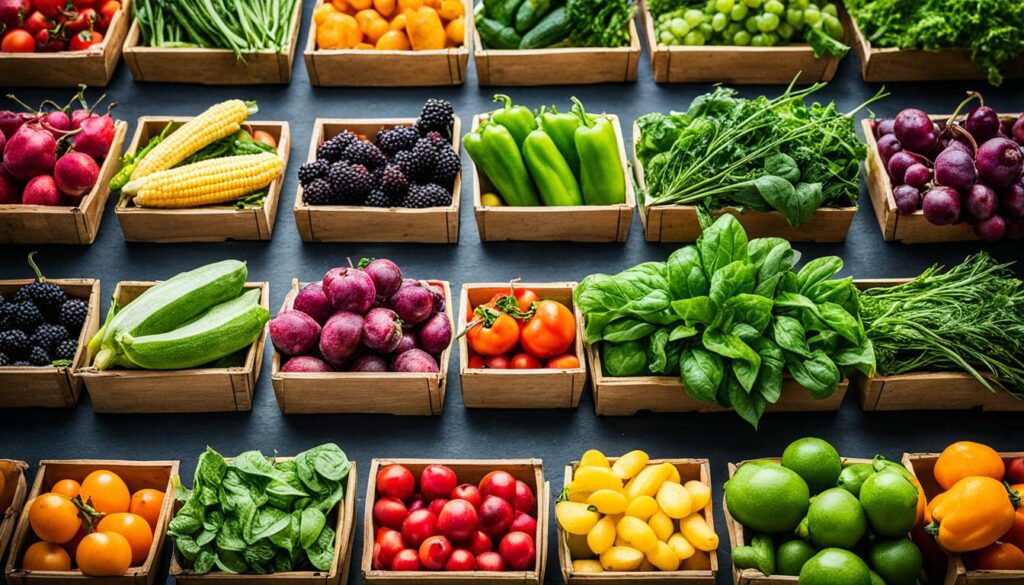
Telling stories helps you connect with customers on a deep level. It lets you add narratives that match your audience’s values. Here are five ways to do this effectively:
Telling a story in your product descriptions is very important. It can turn everyday items into symbols of health, care, and community. By focusing on what makes your product unique and telling a good story, your descriptions can inform, inspire, and connect.
Making sure your farm’s product titles suit search engines can really help more people find you online. Since 93% of people start their online journey with a search, a strong SEO plan is key for your farm’s growth.
Integrating the right keywords into your product titles is vital. This can lift your search rankings, making your items easier to find. By using keywords that fit your farm’s products, you can pull in folks who are truly keen on what you sell.
When you add keywords, remember to keep titles short but full of information. Keep your Meta Title around 65-70 characters, including spaces. This length ensures your title shows up completely in search results, boosting clicks. Titles that are clear and descriptive also help search engines sort your products, making your titles optimised well.
| SEO Strategy | Importance |
|---|---|
| Incorporate Keywords | Boosts search rankings |
| Concise Titles | Improves visibility |
| Long-tail Keywords | Attracts specific leads |
| Descriptive Titles | Enhances user engagement |
Packaging’s look can greatly impact buying choices. But, it’s key to make sure all labels follow rules carefully to avoid legal problems. Meeting labelling regulations and checking product rules ensures a product is both eye-catching and informative.
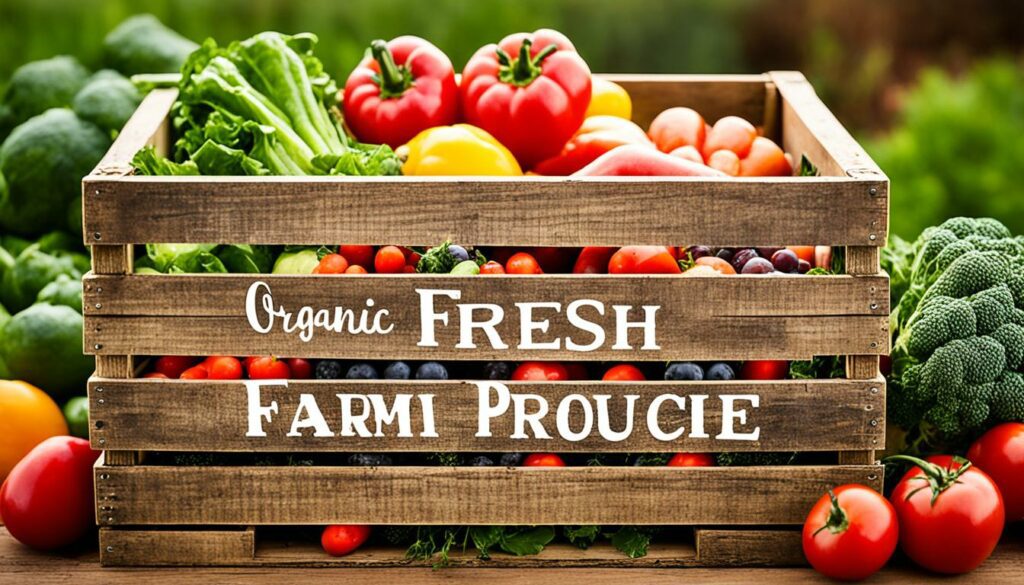
Good packaging catches your eye first when you see a product. It can help people think the product is high-quality. Things like the use of colour, images, and fonts make a package interesting. This makes shoppers more likely to buy it. Packaging should also show what the brand is about, be clear, and useful.
It’s vital for products to follow labelling laws. The Federal Food, Drug, and Cosmetic Act lists five must-have points on a food label. These are food name, how much is in the pack, maker’s name and place, what’s in it, and nutrition facts. The amount in the pack should be in both grams and ounces in a visible spot. Ingredients should be in order of how much is used. The label must also give the maker’s, distributor’s, or packer’s name and address, usually on the front or back of the product.
By following these labelling rules, businesses can make sure their packaging is flashy and follows the law. This protects their products for sale.
When it comes to food for sale, most need clear nutritional labels. These labels are a must, except for a few things. By meeting these labelling regulations, farmers gain trust from customers and stay within the law.
Today, digital marketing is key for farms. It’s vital to be online through manageable platforms. Begin with a few and add more as you get comfortable. Using social media like Facebook, Instagram, and Twitter greatly boosts your brand’s presence.
Investing in social media marketing can boost farm success. With mobile apps and e-commerce, farms see a 60% market growth. Data analytics helps tweak strategies to reach the right audience.
Creating a strong online presence makes a big difference. A good website improves searches, and consistent brand visuals help people remember you. Working with influencers can also help extend your brand’s reach.
Social media engagement in farming is key, showing up to a 25% increase in productivity. By looking closely at social media data, you can improve your online efforts. Digital marketing is crucial, say 92% of marketers in agriculture.
| Platform | Benefit |
|---|---|
| Enhanced customer interaction through posts and updates | |
| Visual storytelling to showcase products and farm life | |
| Real-time updates and engagement | |
| Mobile Apps | Convenient management of crop and weather data |
| E-commerce | Expanded market reach and online sales |
Getting high-quality photos of your products is key. These photos can really grab your customer’s attention. This might lead to more people buying your products. Follow photography best practices to show your farm’s goods in the best way.
There are important steps to take for great product photos. Begin with good lighting to make your products’ real colours stand out. If you’re inside, use softbox lights to mimic natural light. Also, a simple, plain background focuses attention on the product.
Adding infographics and lifestyle shots can make your products more visually appealing. Make sure your images meet the platform’s quality standards. They often look for clear photos that customers can zoom in on.
Showing products from every side is very important. It lets customers see the whole item, helping them decide if it’s right for them. Close-up shots of key features can make your products stand out. This is vital in a competitive market.
By adding these top-notch images to your listings, you give an honest and eye-catching view of your farm’s offerings. This can boost how satisfied customers are and lead to more sales.
Customer reviews and ratings really help farm products succeed. They show others that a product can be trusted. It helps products reach more people. For instance, good reviews about strawberries from Just Farms make people more likely to buy them. This is because the reviews show they’re trustworthy and reliable.
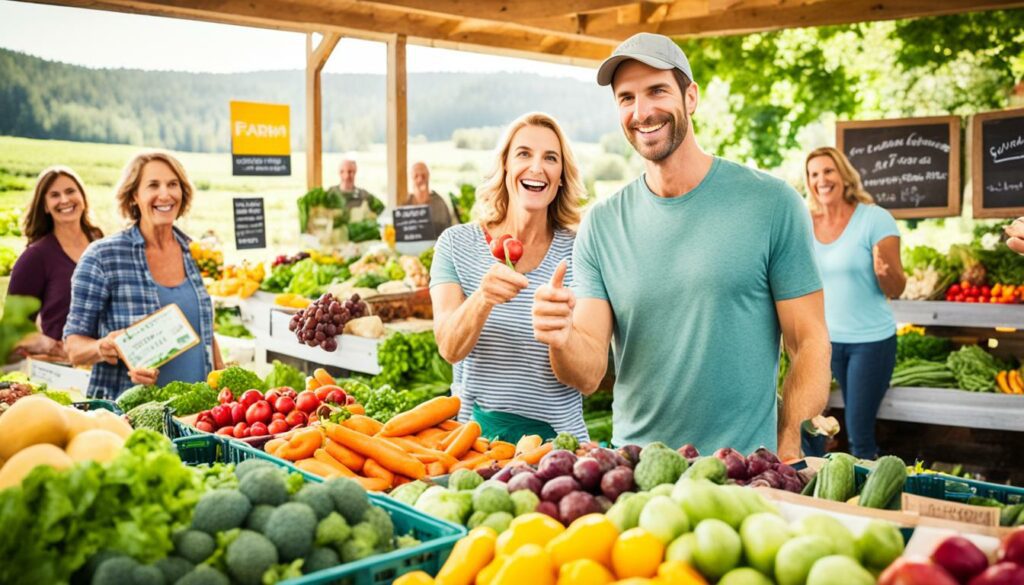
Customer feedback has a big impact. Let’s talk about garlic, which sells at $12 per pound. Good reviews can really up the sales. They make new customers believe in the product’s value and quality. Just Farms also grows mini sweet peppers and mesclun. They use special mixes that customers love. This shows how positive feedback can lead to more sales and happy customers.
“The feedback we received about our strawberries helped us refine our cultivation techniques, leading to a more consistent and higher-quality yield,” said a representative from Just Farms.
Feedback also helps farms get better. Just Farms, for example, learnt they need better farming methods through customer feedback. This was seen in the “Grow the Top Ten Most Profitable Vegetables” report. They found ways to use fewer resources and water better.
Gather and act on feedback to make your products better. This approach meets market needs and quality standards. By doing so, farmers can grow their product’s reputation and find success in various markets.
| Product | Price | Market Factors |
|---|---|---|
| Garlic | $12/lb | High-income, positive customer feedback crucial |
| Strawberries | Varies | Labour-intensive, requires skilled workers and advanced techniques |
| Mini ‘lunchbox’ sweet peppers | $5/basket | Appealing marketing through mixed colours, reviews bolster trust |
| Mesclun | $4/6-ounce bag | Grown in soil-less mix, customer feedback essential for quality assurance |
To sum up, using customer feedback is crucial in building product trust. This trust can lead to more sales. Farms that listen and act on feedback can make high-quality products that people love. This strategy helps them stay ahead in the market.
Creating a Google Business Listing is crucial for your farm’s visibility. It helps people find you on Google Search and Maps. by creating detailed listings, you make your farm more accessible online. This can bring in more local customers.
To start, set up your business profile on Google. You should include all the vital info like your farm’s contact details and opening hours. Also, share a short description of what your farm offers. Uploading top-notch images will make your profile stand out.
Local SEO is key to getting noticed by those in your area. Use the right keywords and keep your profile updated to boost your search rankings. Tools like Google Analytics can help you keep track of your site’s visitors and their behaviour.
Google Analytics gives you insights into visitors from worldwide and local areas. With local traffic details, you can see where your marketing is working best. It tells you if visitors found you through search engines, links, or directly.
| Visitor Source | Percentage |
|---|---|
| Search | 45% |
| Referral | 30% |
| Direct | 25% |
Don’t forget Google Analytics. It works with platforms like Weebly, WordPress, and Blogger. This tool can help refine your SEO strategies. It also ensures your listing is attracting real visitors. Exclude your own IP address to get accurate insights.
A well-maintained Google Business Listing, backed by solid SEO, will make your farm more visible. It helps attract customers in your area. Using analytics, you can keep improving. This way, your business profile always stays ahead.
To be great at customer service, you must have a solid plan for dealing with people. The USDA is a good example. They work with many groups, like farmers and ranchers, at over 4,500 places. They know that talking clearly and answering fast is key to making customers happy.
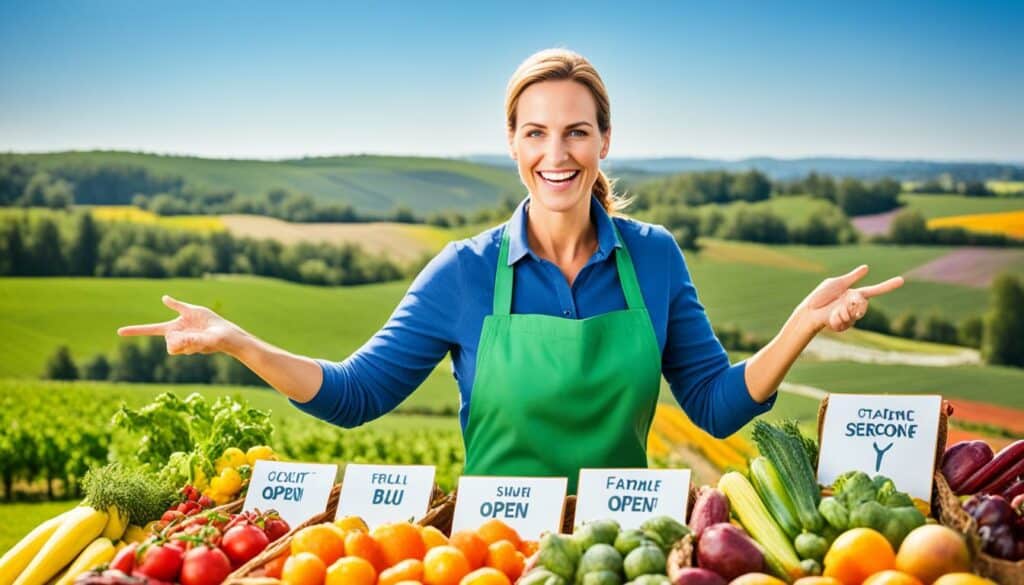
Sharing important news is easier when you have good ways to communicate. The USDA has teamed up with groups like the GSA and Booz Allen to do this better. They make sure everyone knows about prices and when things will be delivered. This way, customers know what to expect, which makes them happy and loyal.
Getting back to customers quickly shows you care. The USDA works closely with partners to be speedy at helping people. It makes customers trust them and feel good about the service they get. This trust builds a strong image for the organisation.
Narrative marketing lets you connect deeply with your customers. When you share your farm’s unique story, values, and practices, you build a strong bond. This goes beyond just buying products.
A farm brand is more than a logo or name. It shows the soul and values of your farm. Creating a brand that shows real truth and love grabs your customer’s hearts and minds.
People like brands that match their beliefs and life choices. A well-made farm brand can help customers feel happier about who they are. This keeps them coming back to your farm.
Using symbols and stories makes your brand stronger. The special meanings behind the products can attract customers. When you choose symbols like caring for the earth or supporting the community, customers see your values more clearly.
Also, telling your farm’s story in a way that hooks people in is key. By sharing stories about the farm life, its challenges, and your hard work, you engage emotionally with customers. This encourages people to support your farm because they see a part of their own story in yours.
“Consumers are more likely to stay loyal to a brand to which they have an emotional connection, emphasising the importance of emotional storytelling in marketing.”
By telling a captivating story, you make your products more valuable. This strategy not only boosts your farm brand identity but also makes your farm stand out. It becomes a place valued by your customers.
As you shape your brand story, remember to test taglines with your audience. Keep your messages consistent. A good tagline is short, memorable, and shows what your farm is about.
Farm products are more than just items you buy. They have a special meaning that connects with people deeply. If we look closer, we can find that these products link to who the customers are.
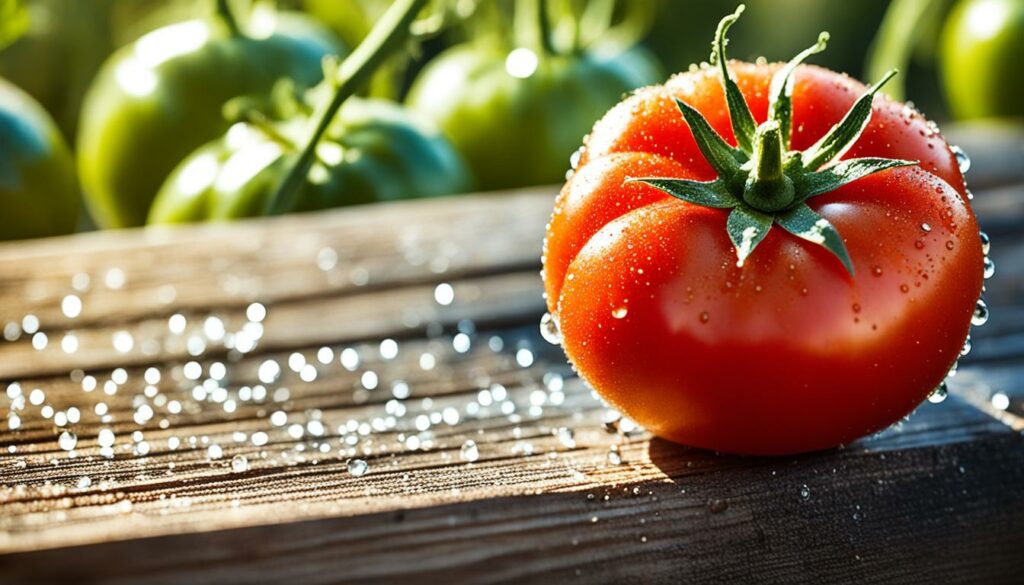
The real, touchable parts of farm goods, like their taste and quality, are important. But, to really capture the market, we need to add intangible values. Things like health benefits and eco-friendly farming matter. Spring bulbs and corms, for instance, might cost more at first. But they win over customers early in the season and keep them coming back.
Making meaningful bonds between farm goods and the people who buy them means knowing your customers. Different groups of customers like different things, based on who they are. This is where making products just for these groups comes in. For example, people who care about the environment might love organic food. Market research on customer habits can show what drives their choices. This helps in offering products that are good for their health, the planet, and their local community, which makes them loyal buyers.
Seasons are a big player in this relationship game. Paying attention to when customers buy most helps plan what to grow. This strategy keeps them happy and boosts our harvest. Autumn sees a lot of flowers bought after the home gardening season, for example. This is our chance to offer what they want. Being able to change our goods as seasons shift is key to keeping sales high.
“Over 85 percent of customers stated that their choice of grocery store depends on stocking food from regional producers,” highlights the correlation between local sourcing and customer identity.
Being flexible helps serve what customers want at different times. It lets us make the most out of every sale opportunity. The 30% rise in farmers’ markets across Pennsylvania over ten years shows a move to local food. This boosts farm income and keeps customers loyal.
Newsletters are now key for engaging with customers directly. They give a big edge in marketing farm products. Since 90% of U.S. adults were online in January 2019, newsletters allow direct communication. They are great for farms to keep customers updated on product news, special deals, or events.
Personalised newsletters can boost reader interest. By making newsletters speak to what customers care about, you improve how they connect with your farm. Adding great pictures can really make your newsletters stand out. It can boost how many people buy from you by up to 650%.
Sharing helpful tips, local market info, and customer stories helps your farm stand out. It builds trust by showing you know your stuff, and it can sway 90% of people to buy. Keep an eye on how your newsletters do, like who opens them and clicks, to make them even better. This way, your farm stays memorable for your customers.
Use detailed descriptions and high-quality images to draw in customers. Make sure you add the right keywords. This will help people find your products easily.
Start by learning what people in your area like and need. This helps you show your products in the best way to the right audience.
Point out what makes your products special and interesting. Tell stories about them. This makes customers feel more connected to what you’re selling.
Add keywords to your titles but keep them short and to the point. This will help your products show up when customers search online.
Make your packaging look good and follow the rules for labels. Eye-catching packages can make people want to buy. Correct labels keep you out of trouble and build trust.
Use digital tools like social media and newsletters to get people interested. They can help your farm reach more customers and grow.
Take clear and detailed pictures of your products. Good images can help customers see exactly what they’re buying. This leads to better decisions.
Good reviews and high ratings show that people like your products. This can bring in more customers because it proves others are happy with what you offer.
Provide correct and complete information about your farm online. This helps people nearby find you more easily. It’s a simple way to be seen by those looking for farm products.
If you communicate well with customers, they feel valued and understood. This makes their experience better and more likely to come back again.
Use your story, symbols, and narratives to share who you are. This can attract people who share your values. It’s a great way to build lasting relationships with your customers.
Show how your products stand for health, sustainability, and community support. This makes customers feel good about choosing your products. It’s about more than the physical product; it’s the good they do in the world that matters.
Keep your customers in the loop with regular newsletters. Share news and updates from the farm. This makes them remember you and want to buy from you again.